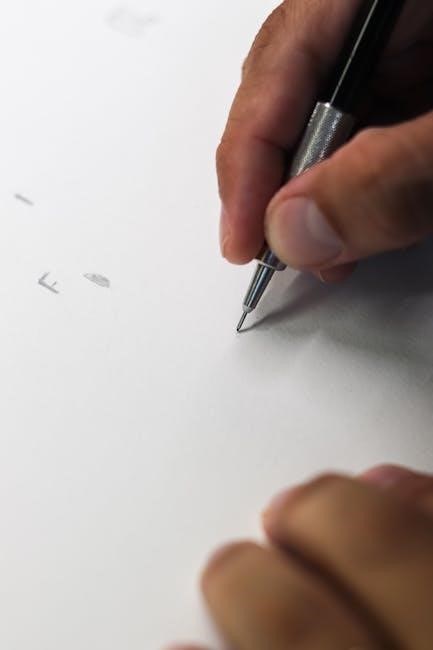how long does it take to learn manual
Category : Manuals
How Long Does It Take to Learn Manual?
Learning to drive a manual car is highly variable. Some individuals grasp the basics within a few hours, while others require weeks or even months of consistent practice. Prior driving experience can also influence the overall learning time.
Average Time to Learn Manual Driving
On average, it typically takes between 10 to 20 hours of practice to learn the fundamentals of driving a manual transmission vehicle. However, some individuals might need closer to 30 hours to feel completely comfortable and confident. Mastering the nuances and becoming proficient can extend this period to 6-12 months, depending on driving frequency and conditions.
Factors like prior experience with driving any vehicle, the frequency of practice sessions, and an individual’s natural aptitude for coordinating clutch, gear shifting, and throttle control play a significant role. Consistent, daily practice typically accelerates the learning process.

Remember, achieving true mastery requires time and patience.

Factors Affecting Learning Time
Several factors influence how long it takes to learn manual driving. Prior experience with driving, even automatic vehicles, can provide a foundational understanding of road rules and vehicle control. The frequency of practice sessions is crucial; daily practice is more effective than infrequent lessons.
Individual aptitude also plays a significant role. Some people naturally grasp the coordination required for clutch control and gear shifting more quickly than others. The learning environment, including the type of vehicle used for practice and the quality of instruction, also impacts progress.
Finally, a learner’s attitude and willingness to practice consistently are essential for success.
Prior Driving Experience
Having prior driving experience, even with an automatic transmission, can significantly reduce the time it takes to learn manual driving. Familiarity with traffic laws, road signs, and basic vehicle operation provides a solid foundation. Understanding how to anticipate traffic flow and maintain safe distances translates well to manual driving.
Learners with prior experience may adapt more quickly to coordinating the clutch, gear stick, and accelerator. They are also likely to be more comfortable with general car handling, such as steering and braking. This reduces the learning curve.
However, it’s important to avoid overconfidence and remain open to learning new skills specific to manual transmissions.
Practice Frequency
The frequency of practice sessions dramatically impacts how quickly someone learns to drive a manual car. Daily or near-daily practice accelerates the learning process, allowing for consistent reinforcement of new skills. Regular exposure helps build muscle memory and improves coordination between the clutch, gear stick, and accelerator.
Conversely, infrequent practice sessions can prolong the learning curve, as individuals may forget what they previously learned. Consistent, focused practice is key to mastering the art of smooth gear changes, hill starts, and navigating traffic with a manual transmission.
Short, regular sessions are generally more effective than sporadic, longer ones.

Individual Aptitude
Individual aptitude plays a significant role in determining how long it takes to learn manual driving. Some people naturally possess better coordination, spatial reasoning, and a quicker ability to grasp mechanical concepts, allowing them to learn faster.
Others may require more time and patience to develop the necessary skills. Factors like hand-eye coordination and the ability to multitask effectively can influence learning speed. A willingness to embrace the learning process and a positive attitude are essential for overcoming challenges.
Ultimately, individual learning styles and innate abilities contribute to the overall learning timeline for manual driving.
Initial Learning Curve: The Basics
The initial learning curve for manual driving focuses on mastering the fundamental skills necessary to operate the vehicle. This stage involves familiarizing oneself with the clutch, gearstick, and the coordination required to start, stop, and shift gears smoothly.
Learners will need to develop muscle memory for clutch control and learn how to engage gears without stalling. Practicing in a safe, controlled environment is crucial during this phase. Expect some initial frustration and frequent stalling as you learn.
Patience and persistence are key to overcoming the initial challenges and building a solid foundation for more advanced techniques.
Clutch Control
Clutch control is fundamental when learning manual transmission. Mastering the clutch involves understanding its engagement point and coordinating its use with the accelerator. Smoothly releasing the clutch while simultaneously applying gas prevents stalling and ensures a seamless start.
Practice finding the ‘friction zone,’ where the engine begins to engage. Sensitivity is key, as each car’s clutch feels different. Jerky movements often lead to stalls. Consistent practice in a safe environment will improve your ability to smoothly engage and disengage the clutch.
This skill forms the base for all other manual driving techniques. It requires patience and a delicate touch.
Gear Shifting
Gear shifting involves smoothly transitioning between gears to match speed and engine RPM. This requires coordinating the clutch, accelerator, and gear stick. Listen to the engine; higher revs typically indicate the need to upshift, while lower revs signal a downshift.
Practice shifting in a controlled environment, focusing on smooth clutch release and precise gear selection. Avoid abrupt movements, which can cause jerky transitions or grinding noises. With experience, gear changes become intuitive and seamless.
Mastering gear shifting is about finding the right balance between engine speed and road speed for optimal power and fuel efficiency. Proper technique minimizes wear on the transmission.
Starting and Stopping
Starting a manual car requires coordinating the clutch, accelerator, and ignition. Depress the clutch fully, turn the key, and gently release the clutch as you apply a small amount of gas. Stalling is common at first, so be patient.
Stopping smoothly involves downshifting as you decelerate. As the car slows, depress the clutch and gently apply the brakes. Avoid abrupt braking, which can cause the car to jerk. Practice anticipating stops to downshift effectively.
Mastering starting and stopping is crucial for safe driving. With practice, you’ll develop a feel for the clutch and accelerator, minimizing stalls and ensuring smooth transitions.

Time Estimates from Learners
Learners report varying timelines for mastering manual driving. Some grasp the basics, like starting and shifting, within a few hours of instruction and practice. Others require several weeks of consistent effort to feel confident.
Many learners find the initial learning curve steep, especially with clutch control and smooth gear changes. However, with daily practice, most report feeling comfortable enough for normal driving within ten lessons or around 20-30 hours.
Factors like prior driving experience and individual aptitude influence learning speed. Some learners benefit from intensive courses, while others prefer a more gradual approach with regular lessons.
Intensive Courses vs. Regular Lessons
When learning manual driving, the choice between intensive courses and regular lessons significantly impacts learning speed. Intensive courses offer concentrated learning, allowing learners to accumulate many hours of practice in a short period. This accelerates the process of mastering essential skills.
Regular lessons, spread over several weeks or months, provide a more gradual learning experience. This approach allows for more time to absorb information and practice between sessions. Intensive courses are beneficial for quicker progress. Regular lessons may suit those needing more time.
The best option depends on individual learning styles and schedules.
Hours of Practice Needed
The number of practice hours required to learn manual driving varies. On average, it takes around 10 to 20 hours of practice to learn the basics. Some individuals may need up to 30 hours to feel confident. Consistent practice is essential for mastering the techniques involved.
Muscle memory plays a crucial role. Repeatedly practicing starting, stopping, and shifting gears strengthens this memory. Aim for shorter, frequent practice sessions rather than infrequent longer sessions.
With dedicated practice, most learners can become reasonably comfortable with manual driving within a few weeks. The key is consistent effort.
Mastering Manual Driving: Beyond the Basics
Once you grasp the basics, mastering manual driving involves refining your skills. This goes beyond simply starting and shifting gears. It encompasses smooth gear changes, especially at higher speeds, and confident hill starts without rolling backward.
Driving in heavy traffic requires anticipation and quick reactions. You’ll need to learn to downshift smoothly to maintain control and avoid stalling. Mastering these advanced skills takes time and experience on various road types.
Ultimately, becoming a proficient manual driver involves developing a feel for the car and its nuances. This comes with consistent practice and patience.
Smooth Gear Changes
Achieving smooth gear changes in a manual car is a crucial skill. It requires coordinating the clutch, accelerator, and gear stick seamlessly. Jerky shifts can lead to discomfort and reduced fuel efficiency.
Listen to the engine’s sound to determine the optimal time to shift. Practice matching the engine’s RPM to the speed of the next gear for a seamless transition. With practice, you’ll develop a feel for the car’s response.
Smooth gear changes not only enhance the driving experience but also minimize wear and tear on the vehicle’s transmission components. It’s a sign of a skilled manual driver.
Hill Starts
Hill starts are a challenging aspect of manual driving. They require coordination to prevent rolling backward. Mastering this skill builds confidence.
The key is using the handbrake. Engage it while stopped on the hill. As you begin to accelerate, gradually release the handbrake while finding the friction point with the clutch. This prevents rolling backward.
Practice makes perfect when it comes to hill starts. Find a safe, quiet hill to practice on. With repetition, you’ll develop the muscle memory needed to execute smooth hill starts without stalling.
Driving in Traffic
Driving a manual car in traffic presents unique challenges. It demands quick reactions and smooth gear changes.
Anticipating traffic flow is crucial. Be prepared to shift gears frequently as speeds fluctuate. Mastering smooth transitions between gears is essential for a comfortable and efficient driving experience.
Maintaining a safe following distance is vital. This provides ample time to react to sudden stops or changes in speed. With practice, navigating traffic in a manual car becomes second nature, enhancing your driving skills and awareness.
Benefits of Learning Manual
Learning to drive a manual transmission offers several advantages. It provides greater control over the vehicle, enabling quicker acceleration and more precise handling.
Manual cars often have better fuel efficiency compared to automatics. This can lead to cost savings over time. Furthermore, driving a manual car can be more engaging and enjoyable for some drivers.
It requires more attention and coordination, leading to a heightened sense of involvement in the driving experience. In some situations, knowing how to drive a manual car can be a valuable skill, opening up opportunities to drive a wider range of vehicles.
Potential Challenges and How to Overcome Them
Learning manual driving presents challenges like stalling, especially for beginners. Practice clutch control and finding the “bite point” to prevent this. Gear grinding occurs from improper clutch engagement; fully depress the clutch before shifting.
Hill starts can be daunting; use the handbrake to prevent rollback. Driving in traffic requires smooth gear changes and anticipation; maintain a safe following distance.
Clutch wear is a concern; avoid riding the clutch. Consistent, focused practice is key to overcoming these obstacles. Consider professional driving lessons for personalized guidance and feedback to improve skills.
Stalling
Stalling is a common frustration for new manual drivers, often occurring when releasing the clutch too quickly or failing to give enough gas when starting from a stop. To combat this, focus on mastering clutch control, finding the “bite point” where the engine begins to engage.
Practice starting on flat surfaces and then progress to inclines. Listen to the engine; a lower RPM indicates the need for more gas. Smoothly coordinate clutch release and gas pedal application.
Don’t get discouraged by stalling; it’s a learning process. With consistent practice, you’ll develop the muscle memory and feel for the car needed to prevent stalls.
Gear Grinding
Gear grinding is another common issue, usually resulting from attempting to shift gears without fully depressing the clutch or shifting too quickly. Ensure the clutch pedal is fully engaged before attempting a gear change. Practice smooth and deliberate shifting motions, allowing the engine RPM to match the appropriate gear speed.
Avoid rushing the process. If you hear grinding, fully depress the clutch, return to neutral, and try the gear change again. Pay attention to the engine sound and feel of the car; these cues will help you anticipate when to shift.
With patience and practice, you’ll learn to shift smoothly and eliminate gear grinding.
Clutch Wear
Improper clutch use leads to premature wear. Resting your foot on the clutch pedal, even lightly, causes the clutch to slip, generating heat and friction. This significantly reduces the lifespan of the clutch. Avoid “riding” the clutch; instead, fully release your foot from the pedal when not actively shifting.
Similarly, avoid excessive clutch slippage when starting from a standstill. Find the friction point quickly and smoothly release the clutch as you accelerate. Minimize the amount of time the clutch is partially engaged to prolong its life.
Practicing good habits prevents costly repairs and keeps your manual car running smoothly.
